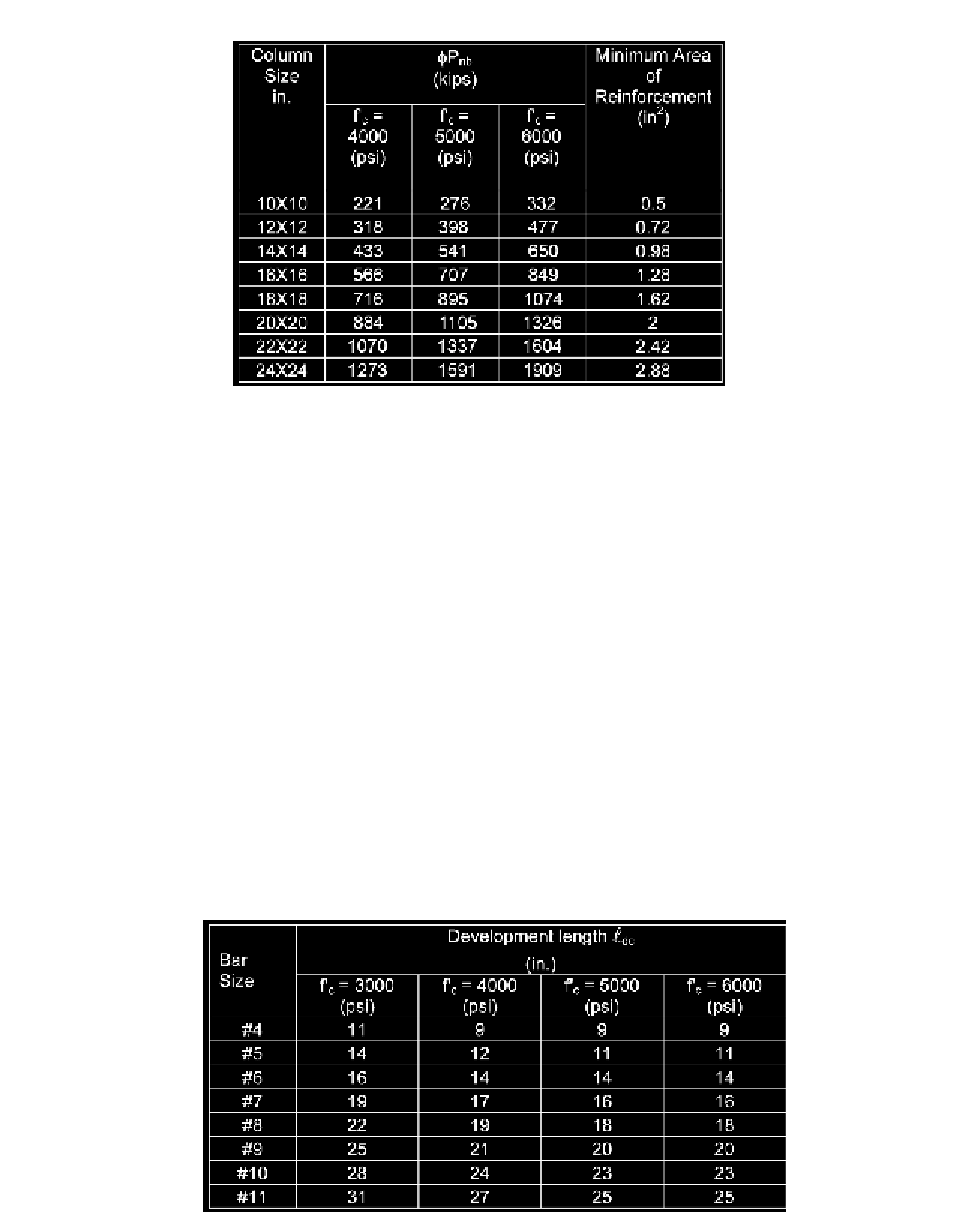Civil Engineering Reference
In-Depth Information
Table 7-2 Bearing Capacity and Minimum Area of Reinforcement Across Interface
Figure 7-7 shows the minimum dowel embedment lengths into the footing and column. For normal
we
ight
concrete the dowels must extend into the footing a compression development length of , but
not less than 0.0003d
b
f
y
, where d
b
is the diameter of the dowel bar (ACI 12.3.2)*. Table 7-3 gives the
minimum values of ˜
dc
for concrete with › = 3000, 4000, 5000 and 6000 psi**. The dowel bars are usually
extended down to the level of the flexural steel of the footing and hooked 90°as shown in Fig. 7-7. The hooks
are tied to the flexural steel to hold the dowels in place. It is important to note that the bent portions of
the dowels cannot be considered effective for developing the bars in compression. In general, the following
condition must be satisfied when hooked dowels are used:
dc
=
0.02d
b
f
y
/
f
c
ʹ
h > ˜
dc
+ r + d
bd
+ 2d
bf
+ 3 in.
where r = minimum radius of dowel bar bend (ACI Table 7.2), in.
d
bd
= diameter of dowel, in.
d
bf
= diameter of flexural steel, in.
Table 7-3 Minimum Compression Development
˜
dc
Length for Grade 60 Bars
* The compression development length may be reduced by the applicable factor given in ACI 12.3.3
.
**
˜
dc
can conservatively be taken as 22 d
b
for all concrete with
›
> 3000 psi.




Search WWH ::

Custom Search